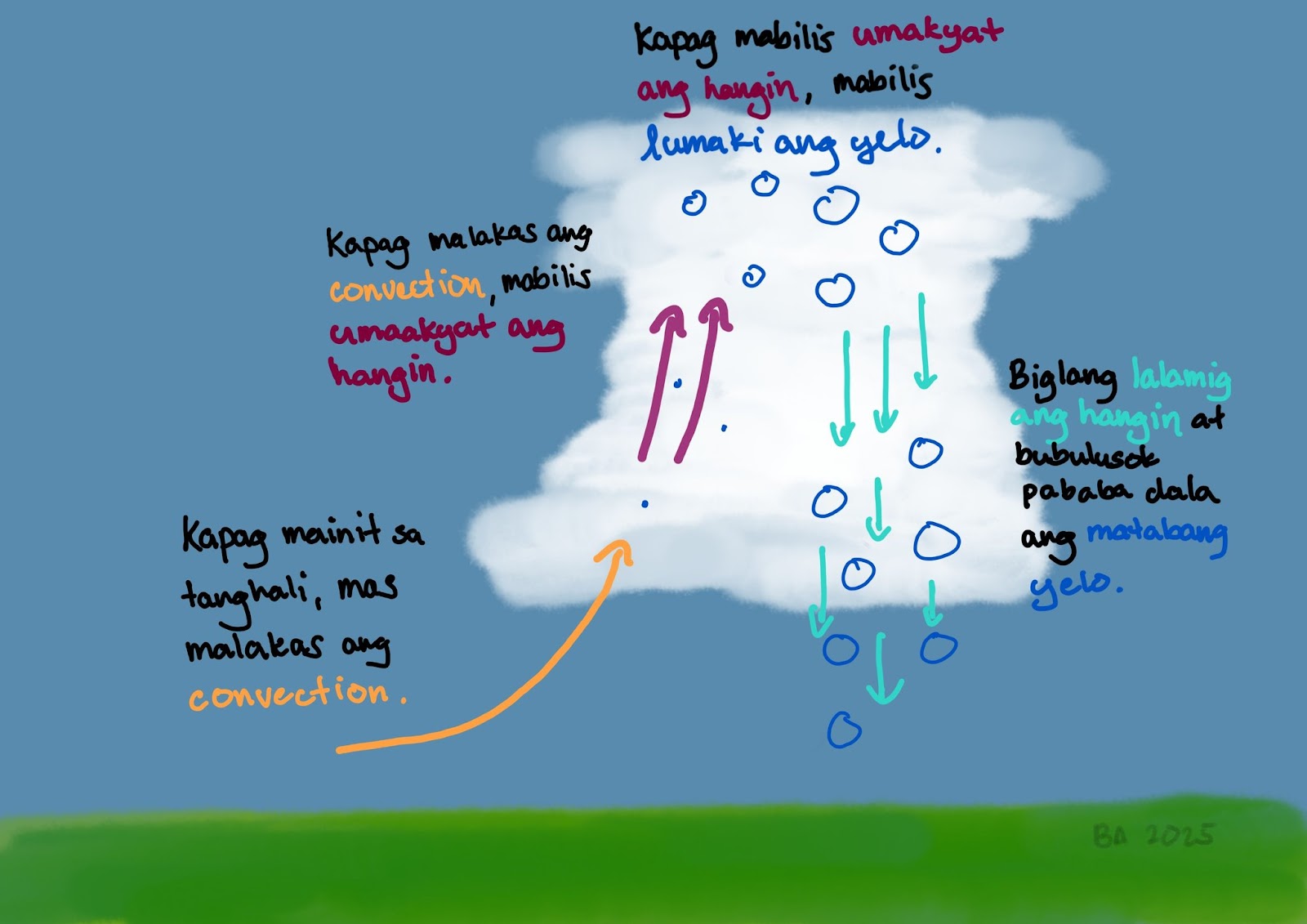
Quezon City – At around 3 pm on Tuesday, August 12, residents of Lagro and Fairview looked up to a sight few in Metro Manila ever see – pellets of ice tumbling from the sky. For several minutes, hailstones clattered against rooftops, scattered across roads, and bounced off parked cars.
While no major damage was reported, the brief storm left locals astonished and social media buzzing, serving as a reminder that hail, though rare, can strike even in the heart of the tropics.
Elesse Lendio, a resident of North Fairview, described the hailstones as about the size of corn kernels.
“Sa tagal ko nang nakatira dito sa North Fairview, ngayon ko lang ito naranasan (I’ve lived here in North Fairview for so long, but this is the first time I’ve experienced this),” she said.
The National Oceanic and Atmospheric Administration’s (NOAA) National Severe Storms Laboratory said that hail is a type of precipitation consisting of small lumps of ice, which form when strong updrafts within thunderstorms carry raindrops upward into the freezing upper atmosphere.
Hail typically develops within tall, vertically developed cumulonimbus clouds, the same clouds that generate severe thunderstorms.
The process typically unfolds in three stages:
In tropical climates like the Philippines, intense midday heating can supercharge convection, creating the conditions for hail to form despite sweltering temperatures on the surface.
Below is a visual guide by Assistant Professor Bernard Alan Racoma of the University of the Philippines’ Institute of Environmental Science and Meteorology, illustrating how intense midday heat can enhance convection and trigger hail formation:

Hailstorms are uncommon in the Philippines, where thunderstorms usually bring only heavy rain.
A 2025 study by Ibanez et al., published in the Asia-Pacific Journal of Atmospheric Sciences and titled Spatiotemporal Analysis of Hail Events in the Philippines, shows that hail can occur in the country—and when it does, it can cause significant damage to crops, vehicles, and property.
Hail may seem out of place in a tropical country, especially on a sweltering, humid day. But the culprit is powerful updrafts triggered by intense surface heating. As hot, moist air rises rapidly, it can sweep raindrops to extreme heights inside a towering cumulonimbus cloud – sometimes more than 10 kilometers up – where temperatures plunge well below freezing. There, the raindrops freeze into ice pellets. Repeatedly lifted by the updrafts, they gain more layers of ice until gravity finally overcomes the updrafts and pulls the hailstones to the ground.
The research found that:
Past notable events include the Bulacan hailstorm of August 2021 and the Nueva Ecija hailstorm of May 2020, both of which damaged farmlands.
Hail may only last for a while, but it can shatter windows, dent cars, injure people, and flatten crops. Because these storms often strike with little warning, quick action is key.
Following these simple precautions can help protect you, your property, and your livelihood when hail begins to fall:
While hailstorms remain a rare occurrence in the Philippines, their potential for damage should not be underestimated. Continued scientific research is essential for understanding their patterns and preparing communities. As climate patterns shift and extreme weather events become more frequent, awareness and readiness are our best defenses. – Fyt.ph (with reports from Jericho Belizar)
Ibañez, M.P.A., Manalo, J.A., Capuli, G.H., Olaguera, L. P., Spatiotemporal Analysis of Hail Events in the Philippines. Asia-Pac J Atmos Sci 61, 24 (2025).